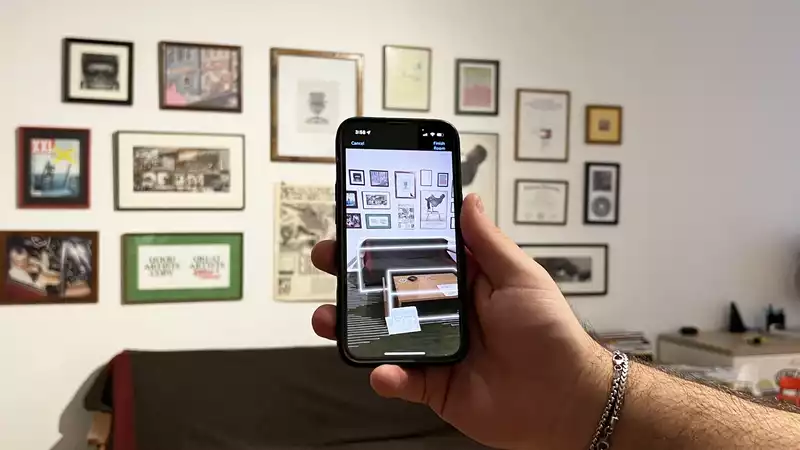If you're like me and have dozens of the best smart home devices in your home, managing them all from the Alexa app's crowded list may be a PITA. Amazon's new Map View feature makes it easy to find and control these gadgets by using your phone's camera to accurately scan your home and create a digital floor plan from the Alexa app. You can then drag and drop devices (shown as pins) onto this map to mark their exact placement in your room and control them with a tap.
The streamlined interface of Map View feels fresh and easy to use, giving Alexa an edge over Google Home and Apple HomeKit's device grid. With Map View, there is no need to scroll through text or guess which smart light "bulb 7" is. And if you want to see the video from a live security camera, you can click on that camera to see it directly.
Map View will be available to all later this year, but I've been using it for a little over two weeks and have been impressed with most of it.
Open the Alexa app, select the "My Devices" tab, and you will find a Map View button (indicated by a pin) in the upper right corner of the screen. Click on it and select the floor to scan (this feature supports multiple floors, so you can stack basements, first floor, and second floor and switch between them with a simple press). A LiDAR-enabled Apple phone or tablet (iPhone 12 or later Pro model, or 4th generation iPad Pro or later) is required to initiate the scan.
To start, I used an iPhone 14 Pro to capture a 600 square foot open living room. The process is simple: the image from the rear camera appears on the screen as if you were taking a video or photo. When you pan the phone, the depth sensor detects the surface and superimposes virtual white lines on the actual walls, floor, and furniture on the screen. At the bottom of the phone's display is a 3D model showing the progress of the scan, which becomes more concrete as you move around.
I was impressed with how quickly and accurately the map view rendered the furniture and detected the doorways to my space. It also accurately measured the dimensions of the windows, even with objects placed on the window sills and the overhead air conditioner in the way. When this first room scan was complete, I pressed the end button and stood in the doorway of the next room to connect it to the diagram.
In less than 10 minutes, I had not only scanned each room in my home, but also dragged and dropped smart lights, security cameras, and smart thermostats onto this personalized floor plan. The map view is extremely detailed and even captures the furniture on the surfaces, like the dual monitor setup I had on my desk. If I decide to change the layout of the room in the future, the scanning process is easy. Adding and removing devices is easy, and you can even move them around by pressing their icons.
Opening the map view and seeing the status of smart home devices where they are located in a room feels much more intuitive than the boring grids and lists of other platforms. Rather than slavishly scrolling through a collection of unnamed smart lights like "Bulb 9" to turn off the overhead light in the kitchen (I've tested a lot of smart light brands over the years, and I'd like to see more of them), it's much easier to see what's going on in your home. Plus, you can see at a glance live information about the smart thermostat's current temperature, the status of smart locks, which lights are on, etc.
Map View is the dawn of an exciting new era for the Alexa Smart Home platform, which not only looks great, but also greatly improves usability. However, at this time it is limited to recent iPhone and iPad Pro owners. Android devices like the Samsung S20 series have LiDAR sensors but cannot use Map View.
And while it seems certain that Map View will fit perfectly on the screens of Amazon's Echo Show and Fire TV smart displays, it is currently locked to the mobile app. Map View should be available once the Alexa Echo Hub is released (Amazon's listing says "coming soon"), and we would be surprised if Amazon does not roll it out to other Alexa smart displays as well.
We look forward to this feature becoming available on more devices and smartphones.
.









Comments